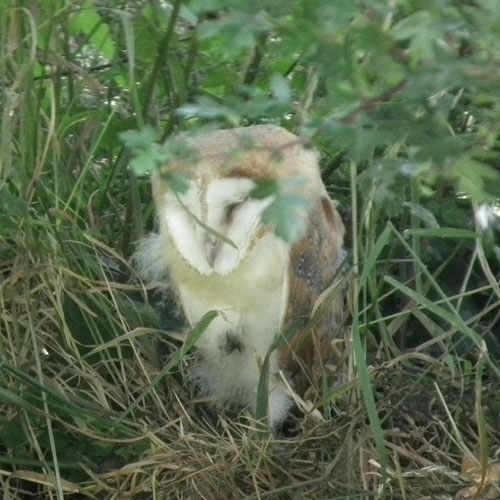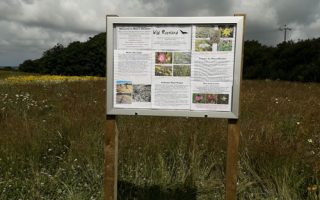 We have, within Covid 19 protocols, been able to continue with some of our activities. Mike’s Meadow is now open to all, to view the importance of pollinating wildflowers and plants for butterflies, moths, bees, and insect life. An interpretative board helps to explain what has been done. Simon Perry, to whom I am grateful for leading this aspect of Wild Roseland’s projects, will be giving a Podcast interview on 15th of August on the subject.
We have, within Covid 19 protocols, been able to continue with some of our activities. Mike’s Meadow is now open to all, to view the importance of pollinating wildflowers and plants for butterflies, moths, bees, and insect life. An interpretative board helps to explain what has been done. Simon Perry, to whom I am grateful for leading this aspect of Wild Roseland’s projects, will be giving a Podcast interview on 15th of August on the subject.
Visit www.roselandpodcast.com to listen to this and other interviews online. The meadow is just off the Carne Road towards the Veryan Riding school at the junction to Nare Head and Kiberick cove. See the Wild Roseland banner on the field gate and go in.
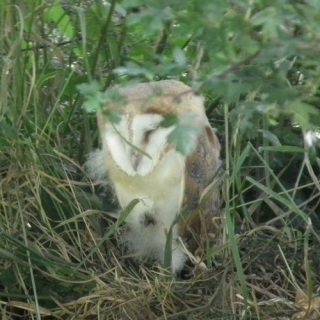 The Barn Owl Project has also proceeded, with records coming in of both sightings and nest box occupation from a group of dedicated individual observers, to whom many thanks. Soon we should have a bigger picture of their status on the Roseland. Certainly, there are several breeding sites showing promise.
The Barn Owl Project has also proceeded, with records coming in of both sightings and nest box occupation from a group of dedicated individual observers, to whom many thanks. Soon we should have a bigger picture of their status on the Roseland. Certainly, there are several breeding sites showing promise.
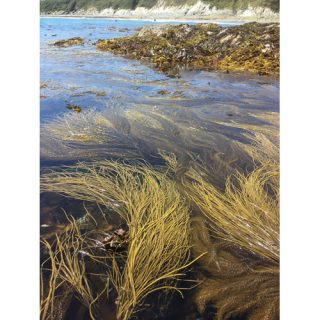 Marine Group members are getting better at identifying- and then surveying, the plants and animals seen on the shore at low tide. Later in 2020 they will complete the fourth annual Big Seaweed Search at Porthcurnick: findings contribute to national research on the impact of climate change on the distribution of marine species in the UK. Incidentally, the Natural History Museum in London recently recognised one of the photos taken by the Wild Roseland Marine Group during 2019’s survey, as an exemplar for the identification of Thongweed, describing it as an excellent, stunning image. Well done to the group; and to Chris Townsend for her leadership and knowledge.
Marine Group members are getting better at identifying- and then surveying, the plants and animals seen on the shore at low tide. Later in 2020 they will complete the fourth annual Big Seaweed Search at Porthcurnick: findings contribute to national research on the impact of climate change on the distribution of marine species in the UK. Incidentally, the Natural History Museum in London recently recognised one of the photos taken by the Wild Roseland Marine Group during 2019’s survey, as an exemplar for the identification of Thongweed, describing it as an excellent, stunning image. Well done to the group; and to Chris Townsend for her leadership and knowledge.
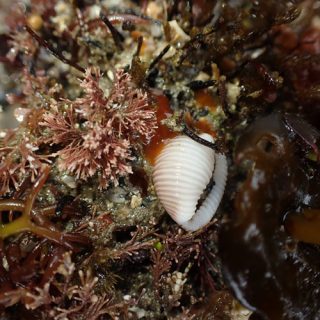 Now is a wonderful time, on a receding tide, to look in rockpools for marine life, such as Starfish, Sea Anemones, Gobies, Shrimps, Hermit or Shore Crabs. Then try to interpret what is beneath the etchings that molluscs like Razorshells, Cockles or Tellin bi-valves, lug and rag worms make in the sand. And look out for miniature pink European Cowries. Just make sure you return anything live you take out of the pools or area of beach they came from. Always watch the tide and stay safe, preferably with others, as the sea is a dangerous place.
Now is a wonderful time, on a receding tide, to look in rockpools for marine life, such as Starfish, Sea Anemones, Gobies, Shrimps, Hermit or Shore Crabs. Then try to interpret what is beneath the etchings that molluscs like Razorshells, Cockles or Tellin bi-valves, lug and rag worms make in the sand. And look out for miniature pink European Cowries. Just make sure you return anything live you take out of the pools or area of beach they came from. Always watch the tide and stay safe, preferably with others, as the sea is a dangerous place.
The sea itself may seem quiet, but this is probably the best time for the huge Basking Shark or the strange gigantic Sunfish to visit us. And if you are lucky you may see Common, Bottlenose or even Risso’s dolphin. It is also a good time to try to identify jellyfish, attracted by the warmer waters and blown in by winds from afar.
Near the shore there are sand eels, acting as bait for other fish, like bass or birds like the Sandwich Terns passing through. The Collins complete guide to British Coastal Wildlife is what I use for recognition of all aspects of seashore life (ISBN 978-0-00-741385-0), but there are others available, of course.
A Wild Roseland 2021 Calendar has been produced by Jane Lewarne, each month showing a montage of wildlife, habitat, and stunning vistas of the Roseland. This is on sale at the Roseland Local Garage at Bessy Beneath.
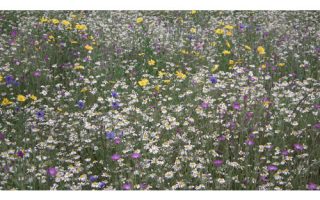 Finally, do not forget you can take part in the national big butterfly count, just by spending 15 minutes spotting butterflies in a sunny spot, on any day up to the 9th of August. Download the spotting chart at www.bigbutterflycount.org or download the free app from the same site:- Butterfly Conservation. Then submit your sightings and see on the interactive maps how the picture grows of how butterflies are faring this year. You will be taking part in important nature conservation work and enjoying yourself at the same time.
Finally, do not forget you can take part in the national big butterfly count, just by spending 15 minutes spotting butterflies in a sunny spot, on any day up to the 9th of August. Download the spotting chart at www.bigbutterflycount.org or download the free app from the same site:- Butterfly Conservation. Then submit your sightings and see on the interactive maps how the picture grows of how butterflies are faring this year. You will be taking part in important nature conservation work and enjoying yourself at the same time.
Contributors:
Article by David Hall. Edited by Tara Robinson.
Wild Roseland is a group of volunteers who care passionately about looking after the nature and landscape of the Roseland peninsula in south Cornwall. Through a number of initiatives and projects, the aim is to inspire and enhance the conservation of this special place for all.

